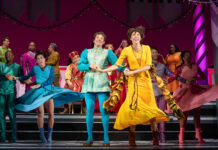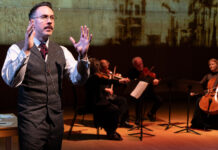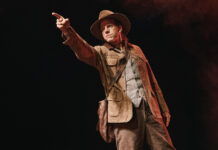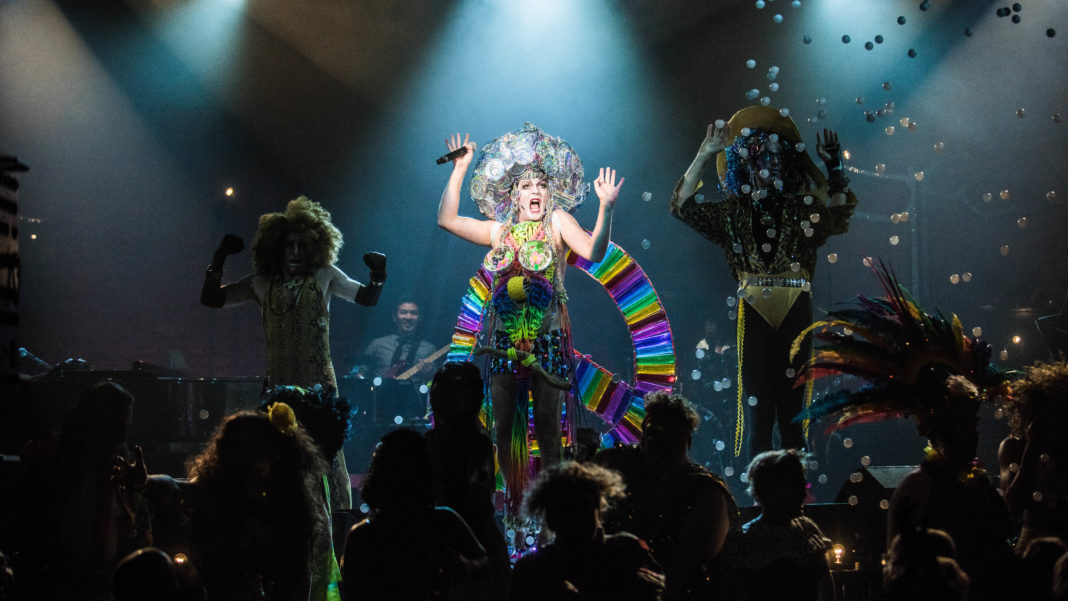This week Chapters 3 and 4 in Taylor Mac’s A 24-Decade History of Popular Music are being performed at the Theatre at the Ace Hotel on Thursday and Saturday. These are the final two chapters in Mac’s project and they take us up to present day.
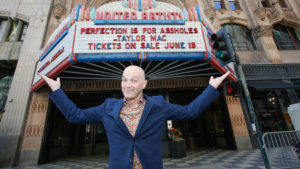
In the second part of my interview with Taylor Mac about A 24-Decade History of Popular Music, we talk about the cathartic component for both the performer and the audience and also about being makers not markers of history. (For the first part of my interview, please go here.)
When you performed the 24 hour marathon in New York, audiences there had witnessed the progression and development of your show. When you travel to a city that has little, if any, exposure to it, what challenges do you face in getting new audiences to roll with the direction of the show?
I think it’s tricky to get them there, but the show has been crafted to prepare you for it. The main thing that always happens is I give permission to the audience for them to feel however they want to feel. I’m not telling them they have to be happy when I ask them to stand up. Maybe they are tired or unhappy. I’m still asking them to stand up. I’m happy when they are rolling their eyes. I want them to feel seen and acknowledged. That’s part of the art in the room. I think that gives them permission and they are usually game to do it. They have said to me, “that made me think about a lot of things about history and about the people in the room with me and myself and my relationship with them.” They have profound experiences with that. They don’t have to perform. I’m the performer, you’re amateurs.
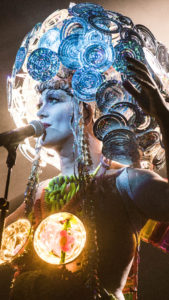
When we spoke a couple years ago, you said that you “work in catharsis. That’s my job.” Can you expand on that?
For the audience, it’s very rare for people to spend six hours in another room with a group of other people all watching the same thing. Especially when that thing is inspiring them to express and contemplate the full range of themselves. A sporting event it’s about rooting for one team, to be one thing. At church services it’s about rooting for one ideology. Here everyone can think about who they are in relation to a much larger world and this much longer history, 240 plus years, and all of that onslaught of culture in terms of music we have. That changes people when they are allowed to see something from many different angles instead of just one. Particularly when they see the audience around them doing that. And they have to do things. It’s a very active show and I think catharsis comes with that. Just sitting can build walls. It’s nice when theatre asks you to get up and do something.
Is it also cathartic for you?
It is. I put my body, my musicians, my music director Matt Ray…it’s not just six hours. It’s all the tech rehearsals and that entire three-week period where we are intensely in the show. We kind of come out the other side as slightly different people. I always feel more grounded and slightly more at peace and slightly more empathetic after I’ve gone through the whole experience. And sore. My body tends to be sore.
Wesley Morris of the New York Times called the 24-hour performance at St. Ann’s “one of the greatest experiences of my life.” How would you describe it from your perspective?
It felt a bit like manhood or queendomhood. It felt like coming of age in a way. I’m not a kid anymore. I felt incredibly bonded to the people in the room: the audience, the musicians and the guests. I see them now, people I haven’t seen since that show, and I feel like they’re family. It felt like this profound experience we all went through together. I’ve never seen an audience that emotionally available before. That’s proven true for the six-hour shows, too.
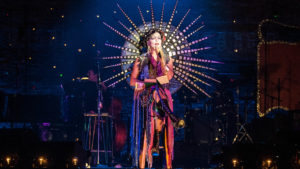
I was really inspired by your piece What’s gonna happen on your website and the idea of being makers not markers. Can you explain how it applies to your work and how it might help the rest of us deal with what is happening?
I don’t think everybody is an artist. The Public Theatre had a program Everyone’s An Artist. No, everyone has the capability of being creative. Being an artist is building a craft and putting years of your life into it and building an expertise to be an artist. But everyone is creative. Everyone has the ability to make things. To make something that is tangible instead of ephemeral ideas or writing on a Facebook post. You can do something in the world.
That’s how I approach it. Instead of marking your life – social media doesn’t feel like direct action. We do real life at my show. We don’t mark. The audience has an opportunity to and are encouraged to be makers of the show with us. What they do in the theatre is the profundity. I’m just the diviner. It’s the audience’s job to go digging and I give them the tools to do so. Then I’m cheerleading, but I’m the one who is sweating.
Leonard Bernstein, whose 100th birthday is being celebrated around the world said in 1967 about the state of affairs, “It’s worse than ever because of the multiplying nuclear arsenals and the total unpredictability of statesmen who are hardly statesmen like.” He also bemoaned the “farcical cynical way everything is being handled. The massive lie that is constantly being told. How can one feel that one is part of anything real? I can’t.” 51 years later, do you share his view or are you more optimistic?
I’m more optimistic because that was 51 years ago and we’re still here. The wonderful thing about our system is nobody can fuck it up for too long. Trump’s got four years, maybe eight, to fuck it up and then in come the cleaners. We have to do our job to get in the position to start the cleaning again.
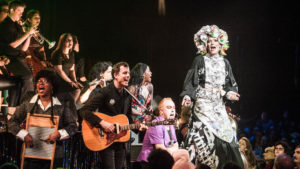
We’re having a hard time learning how to deal with a new force: the internet, social media. It’s a challenge. I think it’s the wrong time to be engaging in social media. If a salesman can become president then you have to protest the tool of production and the internet is that. Until we figure that out, we should take it a bit slower.
I’m trying to spend time with actual people and have real conversations rather than un-nuanced arguments. Everybody wants to be seen and heard. I know why. Because so many aren’t. At the same time you see yourself in every reflective surface. You have to see yourself in everything? It’s such an egocentric culture.
It’s one of the reasons we made this show primarily about the audience. It’s our attempt to make it about somebody else. To be seen and heard. Take up space for ourselves. But at the same time, give more space to the community in the room.
Photo Credit: Teddy Wolff


